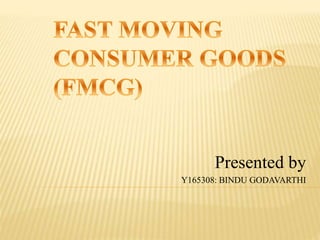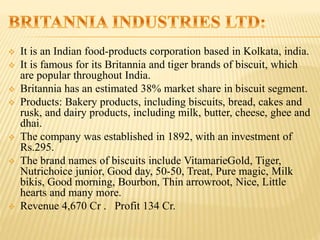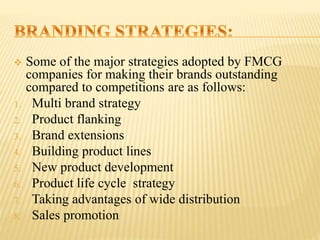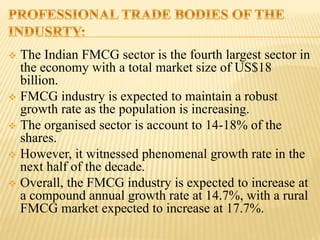The document discusses the Indian FMCG sector, noting that it is the fourth largest sector in the Indian economy, generating over $50 billion in revenues by 2017. It provides an overview of key FMCG companies like Hindustan Unilever, ITC, and Nestle, as well as market segments like household and personal care which account for 50% of the market. The growth of the FMCG sector is expected to continue, driven by increasing incomes, awareness, and changing lifestyles in India.

























